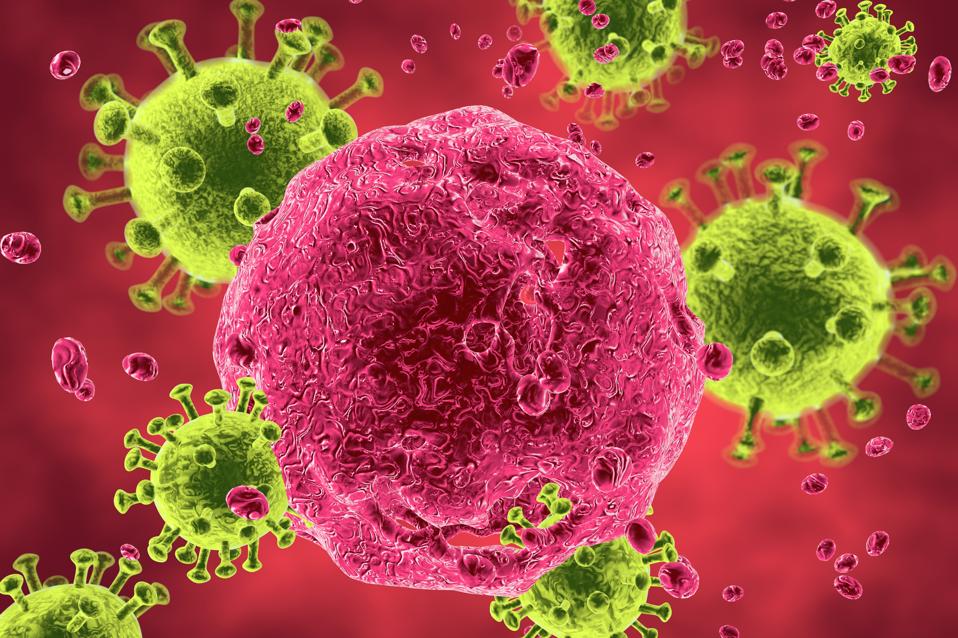


Getty
Few viruses have instilled as much fear as HIV. Although it was discovered nearly 40 years ago, we still do not have a vaccine or a cure. But the COVID-19 pandemic has rivaled that level of fear as researchers race to find a vaccine for SARS-CoV-2, the virus that causes this disease. The largest question at hand: will developing a vaccine prove to be just as vexing?
The answer to that question remains to be seen, but there may be a lot we can learn by comparing the two viruses. As we think about vaccine development, however, it’s important to remember that HIV and SARS-CoV-2 are very different viruses. They are transmitted differently. They replicate differently. They cause disease differently.
So how similar are HIV and SARS-CoV-2?
A few recent studies on the effects of HIV and SARS-CoV-2 indicate that they do have some similarities. Shanghai-based researchers provided evidence that SARS-CoV-2 can infect T lymphocytes, the same cells targeted by HIV. Other researchers have documented that individuals with severe COVID-19 may exhibit lymphopenia, or an atypically low number of lymphocytes in the blood. Likewise, HIV infection results in this abnormality, eventually causing the immunosuppression associated with AIDS. But these findings should not cause us to assume that SARS-CoV-2 is like HIV.
Let’s look first at the infection of T lymphocytes, or white blood cells. The authors of this report provide evidence that SARS-CoV-2 can infect certain white blood cells in a laboratory setting. They also noted that MERS-CoV, a virus closely related to SARS-CoV-2, can infect those same cells. Importantly, however, they noted that neither MERS-CoV nor SARS-CoV-2 demonstrated any ability to replicate in these cells. It appears that these viruses can enter the cells, but the infection is abortive. HIV, in contrast, replicates aggressively in white blood cells, with infected cells spewing out thousands of new viral particles.
What about the observed lymphopenia? In a study of individuals who died of COVID-19, researchers noted that the amount of lymphocytes in the blood decreased steadily during the course of disease. By contrast, other standard blood markers, like red blood cell counts, remained fairly constant. Does this observation mean that infection with SARS-CoV-2 leads to immunosuppression, like HIV? Not necessarily. The authors note that several[1] factors could lead to the lymphopenia. Instead, they emphasized that monitoring lymphocyte levels in people with COVID-19 may be an effective and easy way for clinicians to predict disease severity.
Is there anything we can learn from HIV as we try to develop a vaccine?
Perhaps the most important lesson is that vaccine development can be tricky. At a very basic level, vaccination replicates a natural process by intentionally exposing the body to something that looks like a pathogen. The vaccine may be an inactivated or weakened form of the pathogen or a protein isolated from it. In response, the body produces antibodies and cytotoxic white blood cells that can effectively combat the real pathogen, should it ever enter the body.
HIV thwarts this seemingly simple process in several ways. First, HIV mutates rapidly, constantly changing its appearance and remaining a step ahead of any response produced by the body. Second, the HIV genome, upon entering a cell, integrates into the host cell’s genome, effectively making itself invisible to the host’s immune response. Third, HIV is not particularly immunogenic, meaning our bodies don’t naturally mount an efficient immune response to it. These attributes of HIV have frustrated all efforts to development of an effective vaccine.
Here is the good news: coronaviruses have a significantly lower spontaneous mutation rate than HIV. Preliminary data suggest that this property is true for SARS-CoV-2. We also know that the SARS-CoV-2 genome does not integrate into the genomes of infected cells. Finally, past research on coronaviruses indicates that humans mount a strong immune response to these viruses.
Unfortunately, there’s bad news too. Attempts to develop a vaccine against SARS-CoV-1 following the 2003 SARS outbreak were not successful. Several candidate vaccines were shown to be relatively effective when tested on animals. But, the vaccinated animals also exhibited a severe immunopathology – the vaccine appeared to have caused the animals’ immune systems to become hyperactive and cause greater damage to them. More recently, researchers similarly showed that a candidate vaccine against MERS-CoV provided protection to mice from the virus, but could also result in the same kind of severe damage by their immune systems.
What about the vaccines being developed?
Many candidate vaccines are in the pipeline for SARS-CoV-2, the virus that causes COVID-19. Several of them already have entered Phase I human trials. Indeed, trials involving an mRNA-based candidate vaccine developed by the biotech company Moderna began on March 16, 2020, less than three months after Chinese authorities reported the first cases of this emerging disease. Most likely, several of these candidates will induce a reasonable immune response. But will they be safe and effective? Only thorough testing and human trials will provide the answer to that important question.
Full coverage and live updates on the Coronavirus

